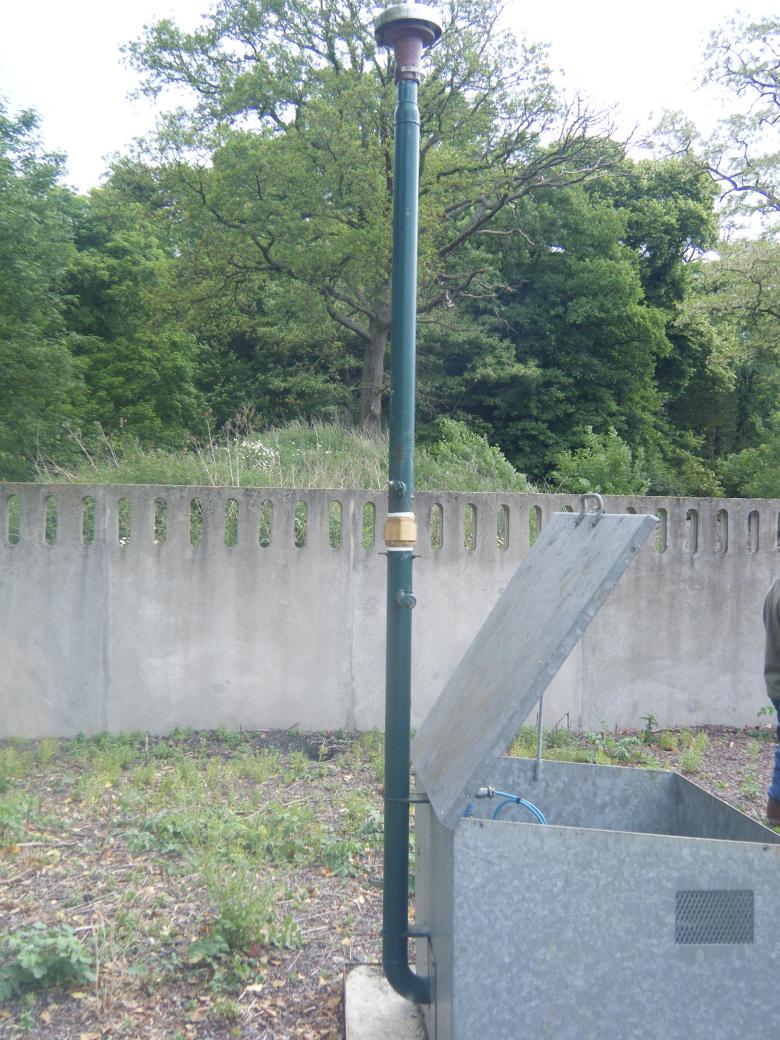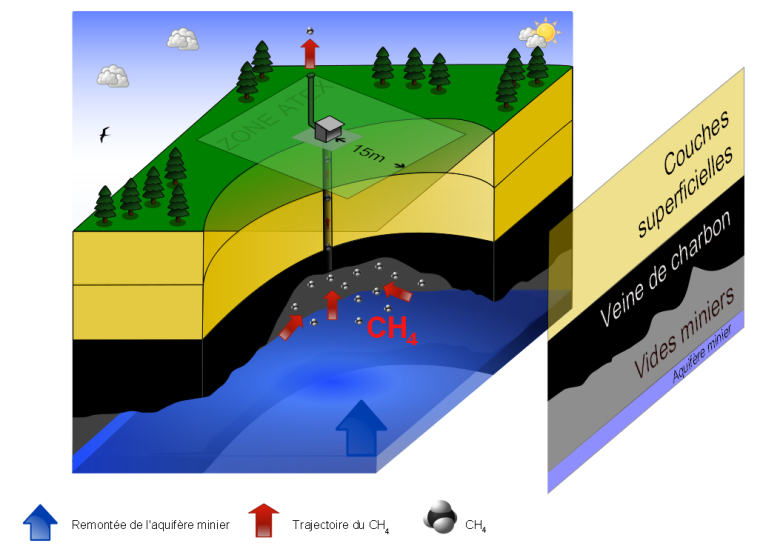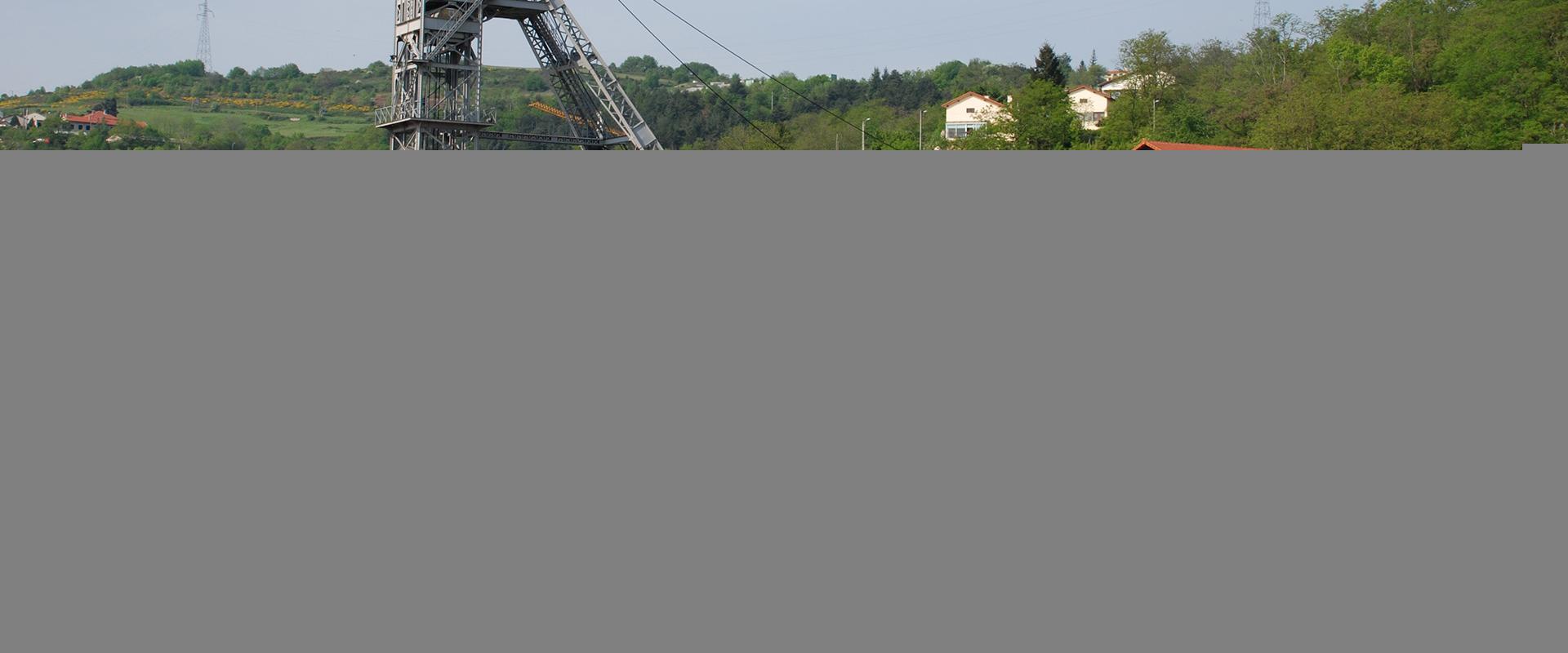
Decompression sounding device installed at the end of the methodological study on the Camblain-Châtelain well (Nord-Pas de Calais).
© BRGM - A. Seddiki
Even when a mine has been closed, the coal that remains is still “alive”. It releases methane, which is then trapped in the mine voids as the water level rises due to natural flooding. This leads to overpressure, which is a well-known phenomenon in coal mining areas and can be dangerous as it will “flush out” mine gases towards the surface.
Managing mine gas risks is crucial from a safety point of view, as methane is highly inflammable. The mine operators at the time therefore developed a methodology.
Until the reservoir is completely flooded and reaches equilibrium, the dynamic parameters have to be closely monitored, geological sampling adjusted to the extent of flooding and safety measures adapted and monitored. This methodology, applied in French coal fields by the BRGM’s Mine Safety and Risk Prevention Department, is the key to today’s risk management procedures.
Migration of gas through the ground
Mine gas fixes to the outer surface of each grain of coal, as well as inside them due to their innumerable cracks. Is it is released by desorption, by virtue of the pressure conditions governed by the i adsorption isotherms that are specific to each coal seam. Desorption occurs naturally when the pressure exceeds 1 bar, although it can be captured between 0 and 1 bar, so that the whole mine becomes a methane reservoir.
Two concepts are involved in the definition of the risk: if gas migrates through the ground, the risk is defined theoretically as occurring at the “intersection between the permeability of the ground to gas and the surface vulnerability”, in other words as the risk of gas reaching sensitive objects such as houses or industrial installations.
Decompression boreholes are drilled at the high points in the mine gas reservoir to allow continuous “passive” decompression of the reservoir. Here everything depends on the natural capacity of the ground to allow migration. BRGM monitors plant and equipment installed vertically above these areas and optimises flooding conditions through specific geological studies so that the risk can be managed throughout the phase of water level rise.

Diagram of the decompression system allowing methane to escape from an abandoned mine as the water table rises.
© BRGM - P. Défossez
Gas migration through mine workings
In the case of migration through mine workings such as a mineshaft, the risk is described as occurring at the “intersection between the risk of occurrence of the event and the surface vulnerability”. In this case, the BRGM studies the “occurrence of the event”, i.e. the probability of the gas escaping through particular workings, and undertakes appropriate preventive work.
In mine workings that have been closed, a network of bottom galleries is therefore maintained to allow the gas to circulate. Pit sealing and pithead maintenance work have been carried out to prevent mine gas from escaping into the open air through these workings, and specific equipment put in place to manage the release of gas at the surface if the reservoir comes under pressure. Finally, the BRGM measures pressure and methane content twice a year, also checking for leaks, for example by monitoring the stability of the shaft backfill column. In general, all mine sections that could connect the mine reservoir to the surface are monitored.
Managing the mine gas risk
The purpose of all these activities is to guarantee proper mine gas risk management that takes all economic and environmental factors into account.







